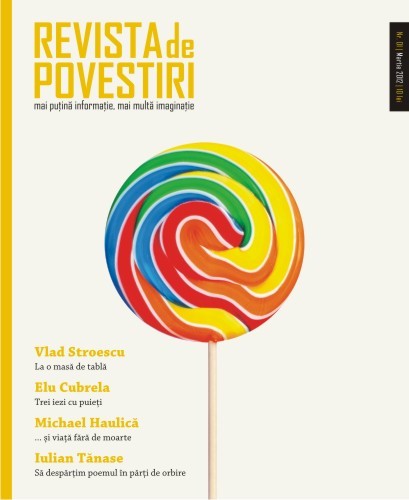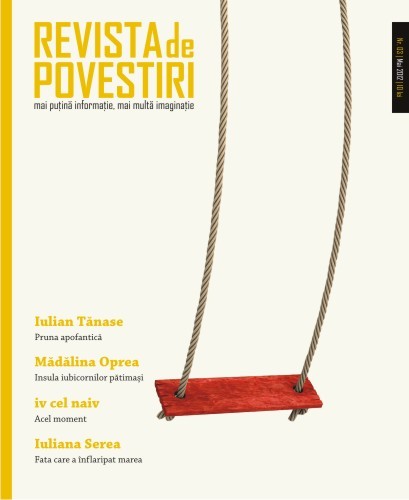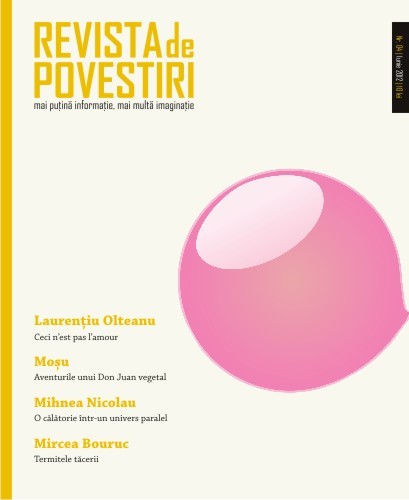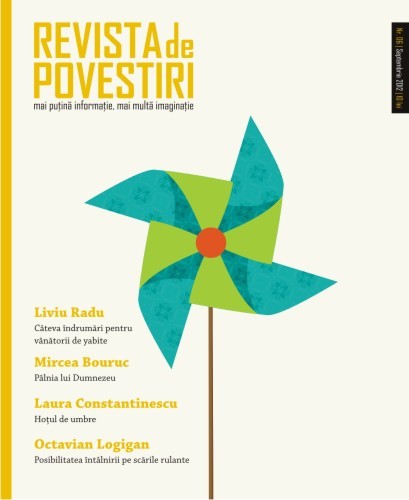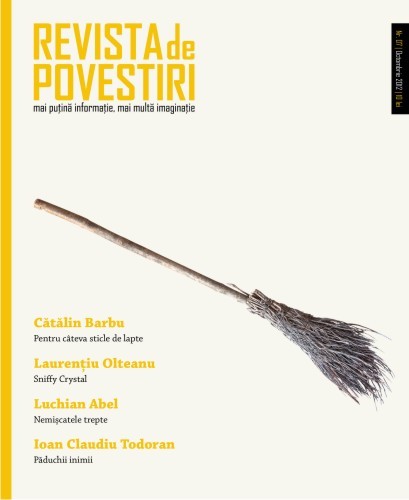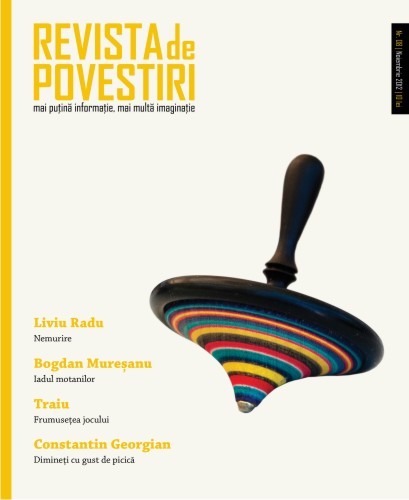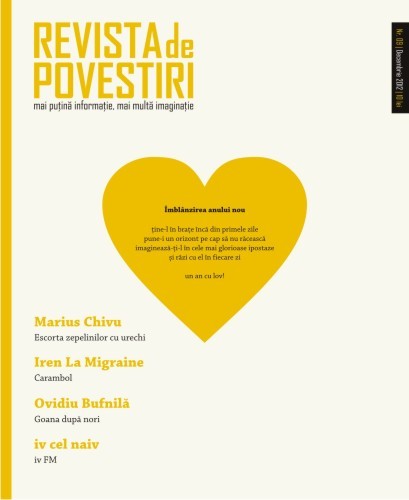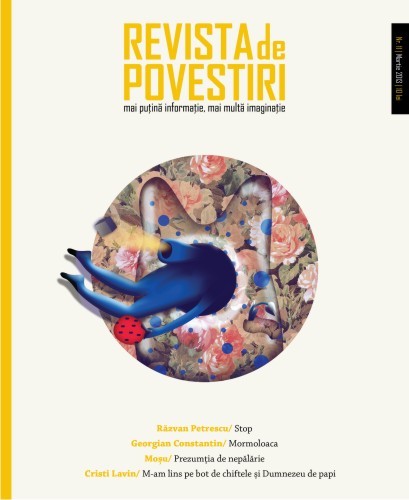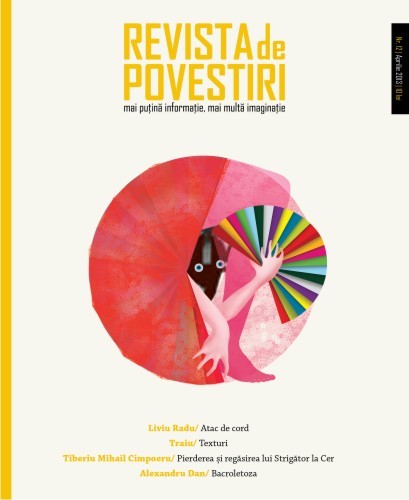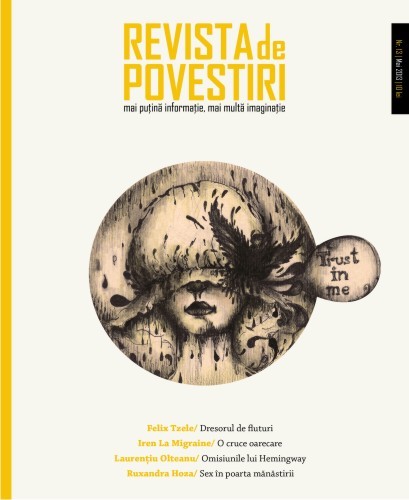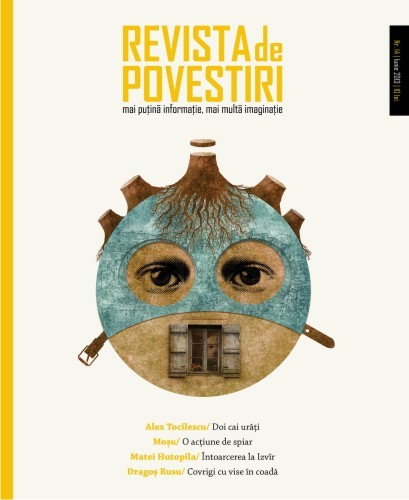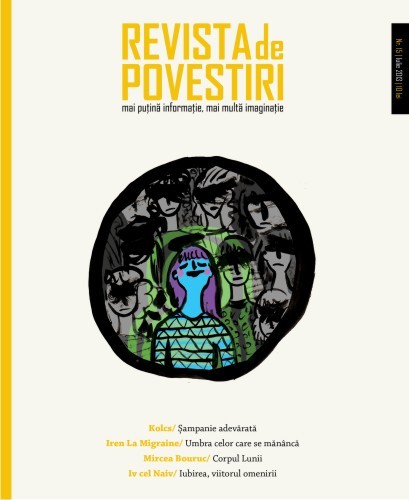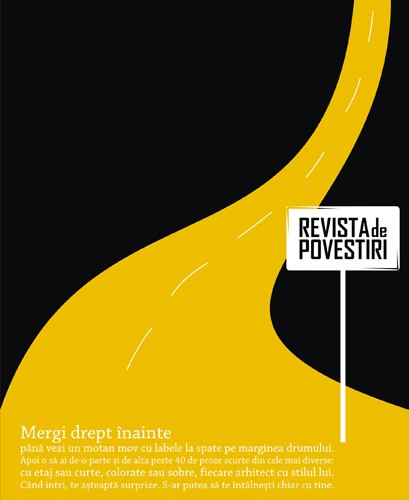Revista de Povestiri was the first and only short stories magazine printed in Romania. It had 16 issues (you can buy the complete collection here), took a break for a year and a half and is now online, as a website that publishes survivors: stories that survived the trainers’ feedback during our workshops and stories that won our fiction contests.
Revista de Povestiri covers, from the first (March 2012) to the last issue (July 2014). In 2012, we had one playful element on the cover, that was also the starting point of the opening story, written by Motanov, and was also used as a concept for the launching event of that issue. In 2013, the covers were made by Romanian illustrators and we also used them as concepts for the launches, linking them to a genre Motanov explored in his story: noir, fantastic, symbolist, dada, surrealist, science fiction. The last one may remind you of a yellow brick road, just that it’s not leading anywhere.
Layout & texts. We had permanent contributors (mostly emergent writers, but we also had reputed writers as guests) and stories selected by Motanov from the readers. There was only one spreadsheet of information (on cultural events) in the magazine, the rest was imagination.
In alphabetical order, writers and illustrators that contributed to Revista de Povestiri through its 16 print issues.
Short stories: Luchian Abel, Ioan Antoci, Denisa Armașu, Cătălin Barbu, Mircea Bouruc, Cristian Caravana, Marius Chivu, Tiberiu Mihail Cimpoeru, Georgian Constantin, Laura Constantinescu, Simina Diaconu, Michael Haulică, Oana Hodade, Florin Iaru, Mihai Kolcsar, Cristi Lavin, Octavian Logigan, Iren la Migraine, Alex Moldovan, Mihnea Nicolau, Moșu, Laurențiu Olteanu, Mădălina Oprea, Miruna Ioana Oprea, Răzvan Petrescu, Liviu Radu, Iuliana Serea, Traian Stanciu, Vlad Stroescu, Alex Tocilescu, Felix Tzele.
Poetry: Matei Hutopila, iv cel naiv, Iulian Tănase.
Artwork: Valeria Anghelache, Sorana Grigoraș , Loreta Isac, Edith Pojum, Corina Roșca, George Roșu, Alina Samoschi, Sickboy, Maria Stoian.
Browse the 11th issue (celebrating one year since the first issue) or the LGBT digital issue.
Launches were occasions to laugh and make friends and play. We never had a traditional launch, which must have been disappointing for serious people. You can read all about them here. Audience building is what we did without knowing it was called that.
















































































































































































































































Special thanks to the music and improvisation bands that entertained our audiences at the magazine launches.

























Brand activations at cultural events required helpers and energy, but they were a great way to connect with potential readers.























































Our readers sent us photos or we caught them reading the magazine at fairs and other events.
The Reading Marathon had 30 youngsters running on fiction pages and a winner: someone who read and reviewed 45 books in one month (April 2013). We occupied the subway with readers to mark the start of the competition. Marathon page.
A recent project linked to the magazine was Pop-up Stories Club, a book club that aimed to promote contemporary Romanian writers and encourage people to read fiction. We held 4 meetings in 2015, we had guests related to the themes of the book chosen for discussion.













